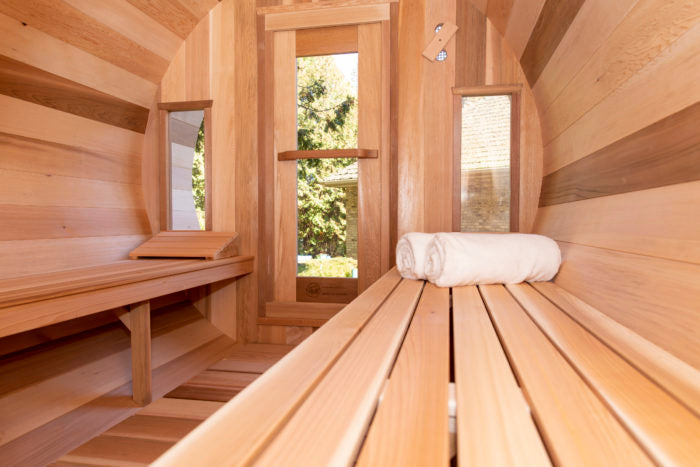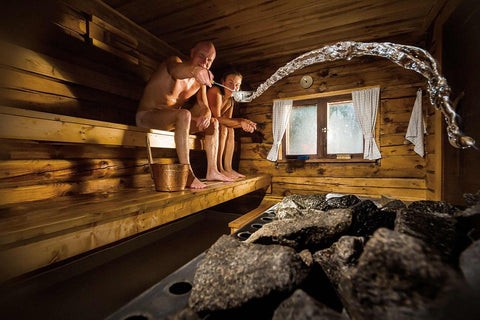Getting My Traditional Sauna To Work
Getting My Traditional Sauna To Work
Blog Article
6 Easy Facts About Traditional Sauna Explained
Table of ContentsThe Single Strategy To Use For Traditional SaunaExcitement About Traditional SaunaThe Of Traditional SaunaTraditional Sauna Fundamentals ExplainedThe 4-Minute Rule for Traditional Sauna
Many of the weight lost in a sauna is water loss and is re-gained upon rehydrating. Nonetheless, without a doubt sauna can be a fundamental part of a healthy and balanced weight-loss program. To consider the distinctions between conventional and IR saunas, I will separate these into verifiable, theoretical, and made differences.Thus, the hottest point in the saunawhich is at the ceiling straight above the sauna heateris generally between 185 and 190 F. Claims that a traditional sauna exceeds 200 F is simply not true and not relevant for electrical saunas marketed in the United States. The temperature level for a far-infrared sauna is usually established between 120 and 140 F; nevertheless, unlike the standard sauna, the objective in and IR area is not to accomplish a heat.
As a result of this, the temperature distinction is almost unnecessary, because excessive sweating causes both sauna types, but the approach of heating the body is different. In an IR sauna the bather will certainly feel warm and will certainly sweat a lot, however at a lot reduced temperatures (Traditional Sauna). Hence, if the objective is to spend longer durations of time in the sauna, the IR sauna is a great option
When a traditional sauna has actually been effectively warmed, the sauna walls are warm, the air temperature has actually accomplished established temperature level and the rocks are super heated. As a fascinating side note, the heated walls and the rocks are giving off far-infrared heat, incorporated with the heated air, to produce an "covering warmth".
The Definitive Guide to Traditional Sauna

When the high temperature is accomplished, the elements cycle on and off to keep the high temperature level. Many standard sauna individuals enjoy pouring water over the rocks to develop vapor to raise sauna humidity degrees. The advantages of putting water over the rocks include: making the space extra comfortable, dampening the nasal passages, and permitting the usage of aromatherapy by blending essential oils with the water.

When the power enters the body, it causes the body temperature to boost and eventually results in sweating. In an infrared sauna it is necessary for the emitters/heaters to stay on almost regularly. Given that there is no mass of rocks to preserve warm, the sauna will cool down if the emitters turned off.
As mentioned over, the sauna bather in an infrared room wishes to place himself before operating emitters to obtain optimal advantage from the warmth. The home heating time for the two spaces can be extremely different, depending on how the spaces are made use of. For a standard sauna, a bather needs to enable 30-40 mins for the area discover this info here to accomplish a desired temperature and to effectively pre-heat the rocks.
Unknown Facts About Traditional Sauna
A well i loved this constructed sauna will typically accomplish a temperature of 150-160 F in about 30-40 minutes. For hotter temperature levels, the space might require to warm for a longer duration.

Conventional saunas have a tendency to be bigger (therefore make use of more power) than infrared saunas, although traditional saunas are certainly readily available in one and 2 person dimensions too. For a two-person conventional sauna, 5x6 or 5x7 dimension is most popular. The top bench can easily seat 2 or 3 individuals and is also enough time to rest throughout the sauna session.
Some Of Traditional Sauna
The typical expense per kWH of power in the united state is roughly $0.11, so a 4.5 kW heater will certainly cost about $.50 to run for one hour, if the heating system runs continually for one hour. Generally a sauna useful content heater will certainly compete 75% of the first hour and 50% of subsequent hours on because the components cycle once the set temperature level is accomplished.

There is a rarely gone over distinction in the social experience between the 2 spaces. While our society has shed several of the social advantage of the traditional sauna experience, it can be extremely socially satisfying (Traditional Sauna). From family time in the sauna, to heart-felt discussions with better halves, to sauna partiesthe typical sauna experience can cause intimate interacting socially
Traditional Sauna Can Be Fun For Anyone
Many greater end infrared spaces include tinted light therapy, audio systems and full-glass fronts.
Report this page